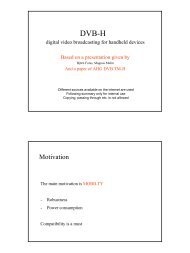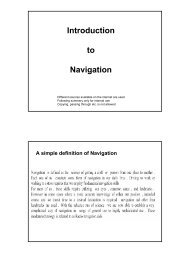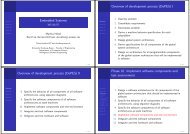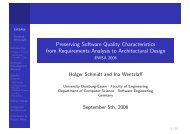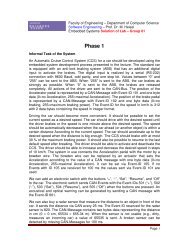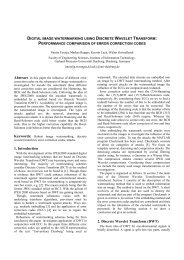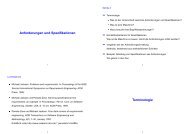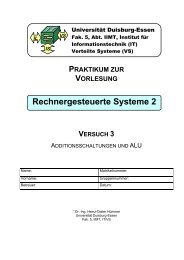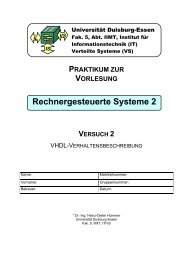Computer Architecture
Computer Architecture
Computer Architecture
Create successful ePaper yourself
Turn your PDF publications into a flip-book with our unique Google optimized e-Paper software.
Critical Regions<br />
How to avoid race conditions?<br />
Find some way to prohibit more than one process from manipulating<br />
the shared data at the same time.<br />
→ „Mutual exclusion“<br />
Part of the time a process is doing some internal computations and<br />
other things that do not lead to race conditions.<br />
Sometimes a process however needs to access shared resources or<br />
does other critical things that may lead to race conditions. These<br />
parts of a program are called critical regions (or critical sections).<br />
Process A<br />
critical region<br />
Critical Regions<br />
<strong>Computer</strong> <strong>Architecture</strong> WS 06/07 Dr.-Ing. Stefan Freinatis<br />
Four conditions to provide correctly working mutual exclusion:<br />
1. No two processes simultaneously in critical region<br />
which would otherwise controvert the concept of mutuality.<br />
2. No assumptions about process speeds<br />
No predictions on process timings or priorities. Must work with all processes.<br />
3. No process outside its critical regions must block<br />
other processes, simply because there is no reason to hinder<br />
others entering their critical region.<br />
4. No process must wait forever to enter a critical region.<br />
For reasons of fairness and to avoid deadlocks.<br />
<strong>Computer</strong> <strong>Architecture</strong> WS 06/07 Dr.-Ing. Stefan Freinatis<br />
t<br />
IPC<br />
IPC



